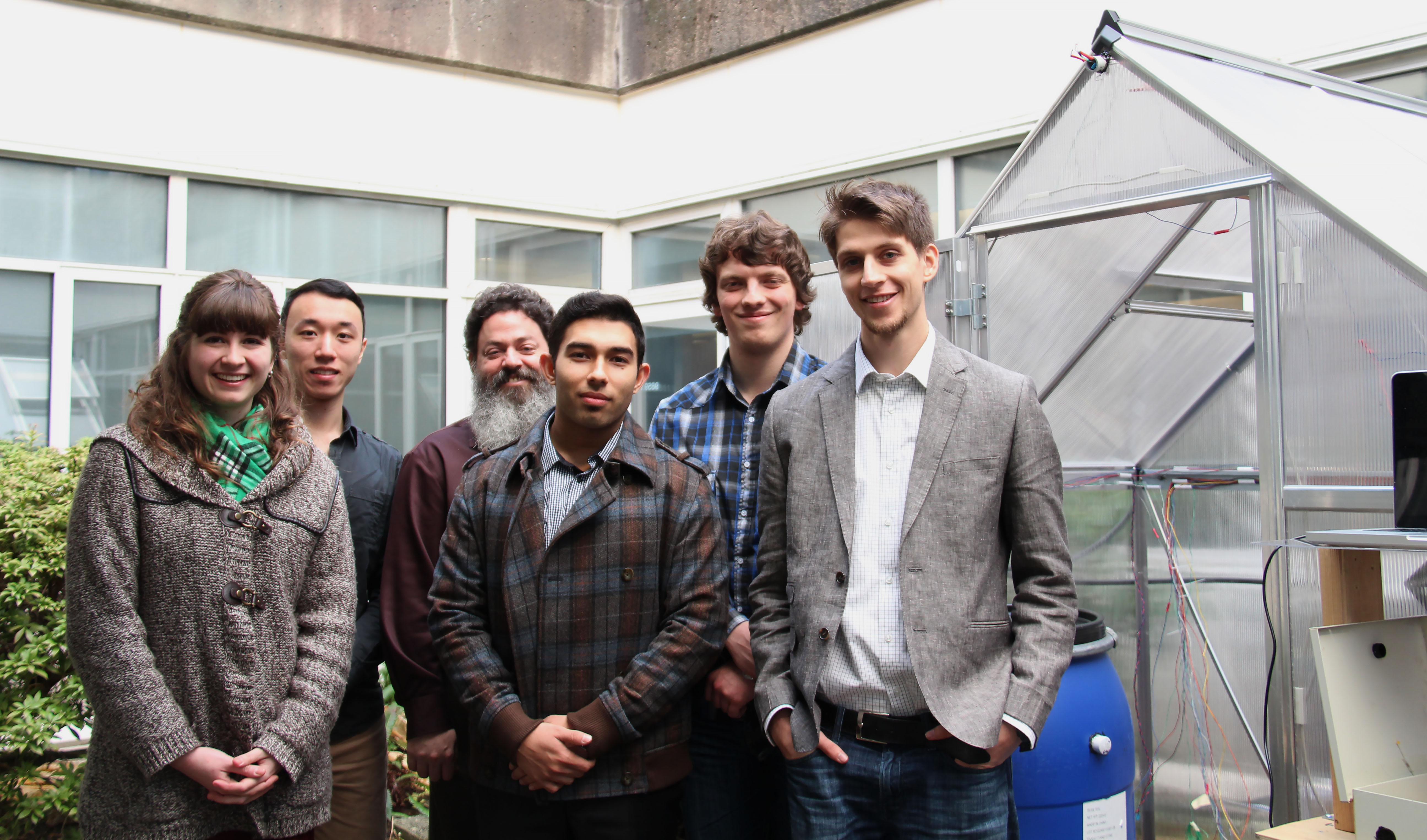A team of six SFU engineering students has developed a highly automated greenhouse that could be used in research as well as disaster relief.
The revolutionary aspect of the greenhouse — called Plantosphere — is that it can automate humidity, temperature and light level. Plantosphere can also water the plants by using a rainwater collection system.
Beyond use by hobbyists or universities, Plantosphere could be used for more extreme settings where the condition and climate is too hostile for plants to grow.
The greenhouse is designed with a soil and air heating system that is meant to stabilize the surrounding environment. These functionalities will keep the surrounding environment above freezing temperature, so that the plants can still grow even if it’s very cold outside.
Using RGB LEDs, Plantosphere can also efficiently produce the particular wavelength that plants need to grow.
Although the greenhouse was a capstone project in a fourth-year undergraduate class, the initial idea of making Plantosphere was very unusual.
It all began when Terry Hannon, one of the engineering students who worked on the project, was asked to take care of his friend’s garden while his friend has gone to do co-op in Japan. Immediately, Hannon found that things were a bit out of place.
The plot wasn’t level, so the water was not distributed evenly, resulting in soil clays. When Hannon and his friends brought in topsoil to fix the problem, animals started to eat plants and damage the garden.
At this point, Hannon and his engineering friends thought that automating the process would make everything better. Hannon started to think, “What would it take to automate a greenhouse?”
The team collaborated to make the automated greenhouse the final project for their engineering class.
“We only had four months to build it [so] it was very exciting because we got to see it take shape right away,” explained Hannon.
Beyond the time crunch, the team faced challenges in building something that they had never encountered previously. He said, “There [still] were a lot of pieces that were very difficult for us to figure out since we’ve never done anything like this before.”
According to Hannon, Plantosphere could be used to serve different purposes: for hobbyists, academic institutions, and disaster relief areas.
The greenhouse’s 17,000 lines of code provide a strong support system for amateur gardeners looking to flex their green thumbs.
“It’s so simple that you don’t need any technical education or experience to operate it,” team member Jane Horton told SFU News.
For universities, Plantosphere would provide a controlled setting for scientists to study the effect of minute changes on individual components. Ultimately, this could allow them to distinguish the ideal environments for certain plants.
Hannon hypothesized that by using this greenhouse design in disaster relief areas, volunteers could grow their plants and vegetables quickly, instead of having to rely on trucked-in vegetables, which take longer to arrive.
Currently, Hannon is planning to take Plantosphere further by getting the device patented. As well, Hannon is considering adding more functionalities, and streamlining those functionalities over the next year.

